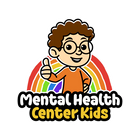|
Key Takeaways:
- It’s normal for children to have some bad thoughts. They are a normal part of childhood development and do not reflect a child’s character.
- Parents and caregivers can respond to children confessing bad thoughts with calmness and reassurance, as well as listening without judgment.
- If a child's thoughts are persistent, cause significant distress, or lead to self-harm, it's time to get professional help.
|
Hearing a child confessing bad thoughts can be alarming. You may worry if it’s normal or whether it should be cause for concern down the line. However, intrusive thoughts are normal and quite common in children (and even adults). They may sound scary, but they don’t define your child’s character. These thoughts are a normal part of a child’s developing mind trying to make sense of the world.
This article will help you understand your child’s bad thoughts and how to distinguish between normal thoughts and alarming ones. We’ll also equip you with practical and compassionate ways to respond to these thoughts. Read on to learn how to build trust and encourage your child to manage their mind, not fear it.
What are “Bad Thoughts” in Children?
“Bad thoughts” in children refer to intrusive, disturbing, and often unwanted thoughts that can cause distress or anxiety. These thoughts can be about different things, such as harm, contamination, or even death and other taboo subjects. They’re usually the opposite of what the child actually believes or desires. Any child can have bad or unwanted thoughts, but children with conditions like Obsessive-Compulsive Disorder (OCD) may be particularly susceptible [*].
Is It Normal for a Child to Have Bad Thoughts?
It is normal for children to have some bad or confusing thoughts as they develop and gain a better understanding of the world. Between the ages of six and 12, children are actively absorbing and processing new information while pushing emotional boundaries [*]. This includes the role of their fear, anxiety, and imagination. In younger children, this may manifest as worst-case scenarios. In older children, it can be a way to test their emotional boundaries. Imagination is a helpful tool for exploring possibilities, but it can also amplify anxieties.
Fleeting or occasional bad thoughts are a normal part of development. However, it is also important to recognize when they start to become a problem. If your child has frequent and persistent bad thoughts that cause emotional distress, then it may be time to intervene. This is especially true if the thoughts affect daily functioning and disrupt school, relationships, and sleep. While the content of your child’s thoughts may be of concern, you should look out more for the intensity and frequency of those thoughts that may impact your child’s well-being.
Why Your Child Might Be Confessing Bad Thoughts
When your child confesses a bad thought, it’s usually a sign that they trust you and are seeking reassurance. At the core of it, the confession is a way to get relief from the intense internal anxiety of having those thoughts. It might be another way to ask, “Does having this thought make me a bad person?” Children may feel that they are fundamentally bad because they anchor their self-worth on their thoughts.
For children with other conditions, like OCD, the need to confess bad thoughts frequently may be a ritual to neutralize the anxiety of an obsession [*]. Children who have experienced trauma, on the other hand, may have intrusive thoughts that are a symptom of unresolved guilt and fear.
Kids who are overstimulated by sources like too much screen time or scary or disturbing content may experience more anxiety that feeds their unwanted thoughts. And while providing reassurance feels natural, too much can also result in children becoming over-reliant on external validation rather than building their own resilience.
How to Respond When Your Child Confesses Bad Thoughts
Hearing your child confess bad thoughts and the guilt or anxiety they may feel because of it can be overwhelming for you both. However, knowing how to respond in the moment can make all the difference. Here’s how you can help your child when they have these thoughts.
Stay calm and non-judgmental
Do your best to remain calm and composed when your child shares bad or disturbing thoughts. Doing so helps them feel less anxious, even if they’re confessing something that might feel vulnerable. When they are done sharing their thoughts, thank your child for opening up. You can say something like, “I’m really proud of you for saying that out loud. I know it must have been scary.”
Reassure them they’re not a bad person for having thoughts
Giving your child reassurance will help them feel less anxious about their bad thoughts. Explain to them that everyone, even grown-ups, has unwanted or upsetting thoughts from time to time. Let them know that having bad thoughts doesn’t mean they are necessarily true.
Listen attentively and ask open-ended questions
Take the time to listen to what your child says. Gently ask open-ended questions to understand their thoughts and how it is affecting them. You could ask something like, “How do you feel when you have this thought?”
Help them reframe bad thoughts
Reframing your child’s relationship with their thoughts is one of the main goals of therapy, but it can also start at home. The key message to communicate to your child is that their thoughts are not facts. Just because they think of a bad thought doesn’t mean it is true or that they will act on it. Try asking your child to think of examples that disprove their bad thoughts. By reframing the thought from being a flawed trait in your child to just a passing mental event, you can help your child build the psychological tools to manage their internal distress independently.
Avoid shaming or overreacting
It is crucial for parents and caregivers to avoid minimizing children’s feelings by calling them silly or unreasonable for having negative thoughts. If your child confesses a fear that may seem illogical to you, try to remember that dismissing their feelings will only show them that they cannot share these thoughts with you. By avoiding shaming or overreacting, your child will be more open and feel safe with you.
When to Seek Professional Help
Knowing when to seek professional help is essential to ensure your child’s well-being. There are certain warning signs to look out for that indicate the need for professional help.
First, observe whether the condition is getting worse despite your best efforts. Get immediate help if your child mentions suicidal thoughts, talks about death, or engages in any form of self-harm.
Other warning signs include recurring violent or aggressive thoughts, sudden changes in mood or behavior (e.g., becoming angry, irritable, or withdrawing), and other thoughts that interfere with your child’s daily life.
If you see any of these patterns, then it’s a clear sign that professional help is needed. Fortunately, effective treatments are available, such as Cognitive Behavioral Therapy (CBT) and Exposure and Response Prevention (ERP) [*]. These therapies help children learn to manage their thoughts and behaviors. In more severe cases, medication may be prescribed alongside therapy to help ease symptoms.
The Bottom Line
Hearing your child confess bad thoughts can be uncomfortable and raise concern, but do remember that you are their most important source of support. Staying calm, listening without judgment, and offering reassurance to your child will help them understand that having a bad thought doesn’t automatically make them a bad person.
If your child continues to struggle with persistent and frequent bad thoughts despite your best efforts, then do not hesitate to seek professional help. Consider adding tools like our feelings worksheets in conversations with your child as they figure out how they feel from the intrusive thoughts.
References:
- García‐Soriano G, Carrasco A, Emerson L. Obsessional intrusive thoughts in children: An interview based study. March 2023.
- Mah V & Ford-Jones E. Spotlight on middle childhood: Rejuvenating the ‘forgotten years.’ February 2012.
- Pinciotti C, Bulkes N, Bailey B, et al. Common rituals in obsessive-compulsive disorder and implications for treatment: A mixed methods study.
- Law C & Boisseau C. Exposure and Response Prevention in the Treatment of Obsessive-Compulsive Disorder: Current Perspectives. 24 December 2019.





















































